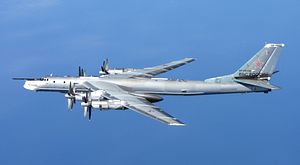I was part of a group of American experts invited by the Republic of China’s Ministry of Foreign Affairs (MOFA) to observe Taiwan’s recently concluded presidential and legislative elections. Needless to say, it was a good opportunity to witness Taiwan’s vibrant democracy in action. It was also a chance to take the temperature of Taiwan’s defense community, and to learn how they are coping with the traditional hard power playbook that Beijing is deploying in parallel to its massive, island-wide disinformation campaign. An oft-cited example of recent Chinese military muscle flexing was the passage of China’s indigenously produced aircraft carrier Shandong through the Taiwan Strait, 16 days before Taiwanese went to the polls in an election widely considered a de facto referendum on whether Taipei would remain aligned with the United States or tilt toward China.
As in most conversations with our Taiwanese interlocutors, the focus was overwhelmingly on the existential threat posed by the People’s Liberation Army (PLA). However, in our meetings with Taiwanese defense officials and think tank experts, another, somewhat unexpected, name occasionally surfaced as a security threat, particularly for the Republic of China (ROC) Air Force: Russia. While, ROC defense officials were, as is understandable in a track-two setting, generally short on specifics, they stated, in no uncertain terms, that Russian warplanes are involved in joint Sino-Russian activity in and around Taiwanese airspace.
Although People’s Liberation Army Air Force (PLAAF) warplanes frequently conduct operations in the Taiwan Strait, they have, until recently, generally refrained from crossing the median line in the strait. Prior to the past year’s precipitous downslide in cross-strait relations, respect for the median line, per the Taiwan MOFA, functioned as a “long-held tacit agreement” that helped keep the peace in the channel. However, of late, reports of Chinese violations have begun to surface. For example, in April 2019, Shenyang J-11 fighters crossed median line, as the Trump administration readied approval of the sale of F-16V fighters to Taiwan. ROC defense officials and experts conveyed that China’s respect for the median line has only deteriorated since. As is well known, PLAAF activity in and around Taiwan’s airspace is intended to wear down the ROC Air Force’s readiness and force it to expend precious resources.
In August, Russia and China conducted a joint air patrol, wherein “a pair of Russian Tupolev Tu-95 long-range bombers and a similar number of Chinese Xi’an H-6K bombers” flew over international airspace between South Korea and Japan. Korean and Japanese fighter jets scrambled to respond to this intrusion in to their air defense identification zones (ADIZ). Notably, the intrusions occurred in the area where the Korean and Japanese ADIZs overlap, suggesting, per U.S. Commander, Pacific Air Forces Charles Brown, an attempt to broaden the already deep fissure between two of America’s most crucial Asian allies.
While Russian President Vladimir Putin has cultivated a reputation for hard-headed realpolitik, these episodes demonstrate that he may be more focused on currying favor with Beijing than on conducting a policy that is in Russia’s national interest. Western observers are well aware of Russia’s revanchist aggression in Eastern Europe, and its return to great power status in the Middle East. Far fewer are familiar with Russian foreign policy toward East Asia. In contrast to Europe or the Middle East, Russia is a secondary power in this region. Furthermore, aside from the deep and multifaceted Sino-Russian entente, Russia, in its relations with Japan, South Korea, and the Southeast Asian states, could be said to act in a way most approximating a country with a focus on trade and investment, versus its traditional, hard-wired, hard power perspective. For example, Russia is an active participant in the region’s multilateral fora, such as APEC, and is generally not seen in the region as the threat it is elsewhere. As a result key U.S. security partners, such as Japan, have hitherto maintained far more functional relationships with Russia than do most NATO countries. For Moscow the benefits of these relationships, particularly in the economic sphere, are hardly insignificant. For example, in 2017, 7 percent of Russian exports were destined for Japan and South Korea combined (versus 11 percent to China). However, dependence on China is likely to increase, especially with the Power of Siberia LNG pipeline coming online late last year.
In light of Putin’s desire to develop deeper ties with Asian countries such as Japan, South Korea, and the ASEAN states, both in response to Russia’s continuing isolation from the West and to diversify away from China, Moscow’s willingness to join Beijing in bullying its neighbors appears quite short-sighted indeed. In fact, this decision underscores that Russia’s role in East Asia is not entirely “normal,” and is becoming less so as Beijing is ever more in the driver’s seat. Not only do these cases demonstrate Russia’s eagerness to act as China’s sidekick, they also show that Putin is willing to take actions, at least in Asia, on China’s behalf, even when they harm Russia’s own bottom line. While, in isolation, the Russian threat to Japanese, South Korean, and Taiwanese security is minor, these developments portend that the days of Moscow hewing to an independent foreign policy in Asia are at an end.
John S. Van Oudenaren is Assistant Director of Political and Security Affairs at the National Bureau of Asian Research (NBR) in Washington, D.C.

































